02 Focus Continues to Speed Up When Pedal is Released
(Updated on November 5, 2020)
There are many people in the world who still drive vehicles with a manual transmission although that's slowly changing. These vehicles have a clutch pedal on the floor to the left of the brake pedal.
The clutch is what links the wheels to the engine. All the rotational energy created by the engine gets transferred to the wheels through the clutch.
If you ever have problems pressing down on the clutch, then you will have problems transferring power to your wheels. This will ultimately result in the inability to drive safely on the road.
Top Reasons for a Hard Clutch Pedal
When you step on the clutch pedal with your foot, there should not be too much resistance. A normal clutch pedal depression will feel nice and smooth.
Some vehicles have stiffer clutch pedals than others, depending on the amount of torque the transmission is designed to handle and if the vehicle comes with any type of clutch assist.
However, if you feel that the clutch pedal is way too hard to press, then there could definitely be something wrong within the system. Below are some of the most common causes of a clutch pedal being hard to press down.
1) Clutch Needs Adjustment
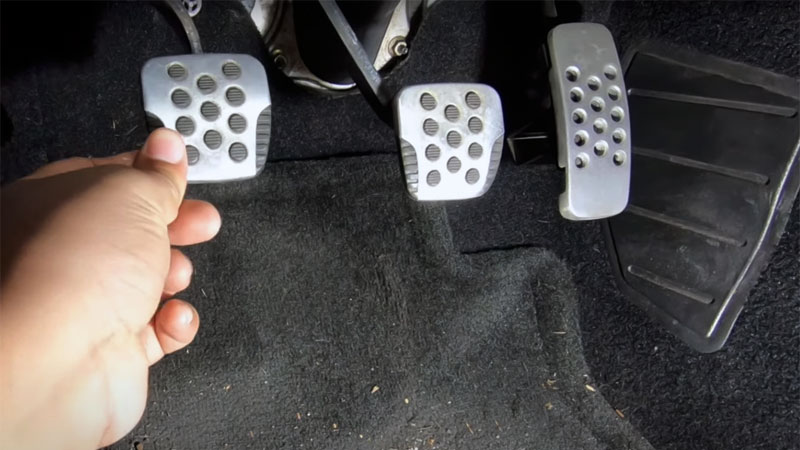
If your clutch is too stiff, one of the simplest things you can check is the clutch pedal adjustment. If the clutch is way out of spec, the clutch may be partially (or even fully) disengaged while the clutch pedal rests at the top of its travel.
Before diving too deep into troubleshooting, verify that your clutch pedal has been adjusted properly. This is especially true if you've recently changed the clutch or the clutch master cylinder.
2) Bad Cross Shaft
The cross shaft is a lever in the transmission that is responsible for transferring the pressure of your foot to the clutch release bearing, which disengages the clutch. It is linked to the clutch fork and cable components.
If your cross shaft were to wear or bend, then it may cause problems when it comes to pressing down on the clutch pedal. It could also impair the performance of your entire transmission, too.
3) Bad Pivot Ball
The clutch pivot ball is designed to make the operation of the clutch feel as smooth as possible. It is what gives the clutch pedal that smooth feel when you press down on it with your foot.
But if the clutch pivot ball were to get worn out or damaged, the smoothness of the feel will start to fade. Instead, you will be left with a stiffer clutch pedal that will require more force to press down.
4) Pedal Blocked
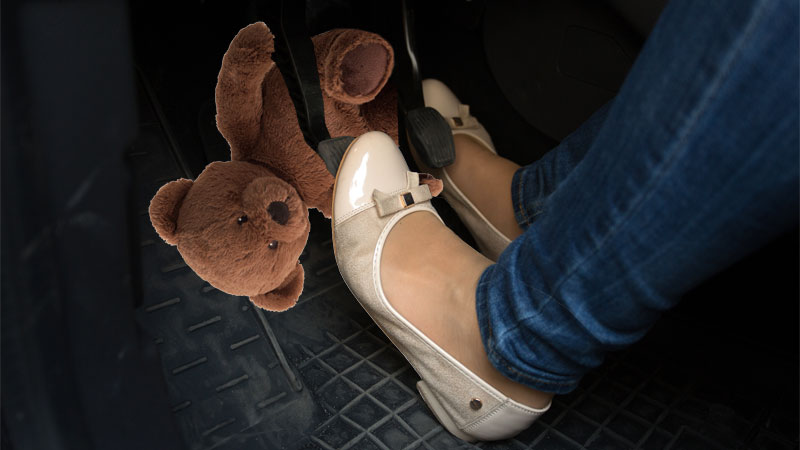
If you have small items on the floor of your vehicle, it is possible that one of these small items might be caught underneath the clutch pedal. If this happens, you won't be able to press down the pedal completely.
You might not think to look underneath the pedal because it probably won't occur to you that this is the reason it is sticking. If you ever need to press down hard on the clutch pedal, make sure there is nothing underneath it.
Otherwise, it could damage the pedal or prevent you from disengaging the clutch. Even worse, the object can get stuck under your brake pedal with much dire consequences.
5) Bad Clutch Cable
The clutch cable is what connects the clutch pedal to the clutch linkage in many vehicles. When you press down on the clutch pedal, it causes the cable to pull on the linkage so that the clutch becomes disengaged.
Once the clutch is disengaged, you can shift the gears of the transmission safely. But if the clutch cable is stretched too much or broken, then you will have to press down harder on the clutch pedal to disengage the clutch.
6) Bad Linkage
The clutch linkage consists of the many hydraulic or mechanical components which allow the clutch to function properly. Aside from the clutch pedal, the linkages consist of various arms and rods.
When you press down on the clutch pedal, the linkage multiples this force so that it can impact the pressure plate. This creates the necessary force to disengage the clutch on demand.
7) Bent Clutch Pedal Assembly

The clutch pedal assembly is the structure that mounts the clutch pedal to the firewall. Some vehicles have rather flimsy clutch pedal assemblies that may bend over time, or when used aggressively.
8) Aftermarket Clutch
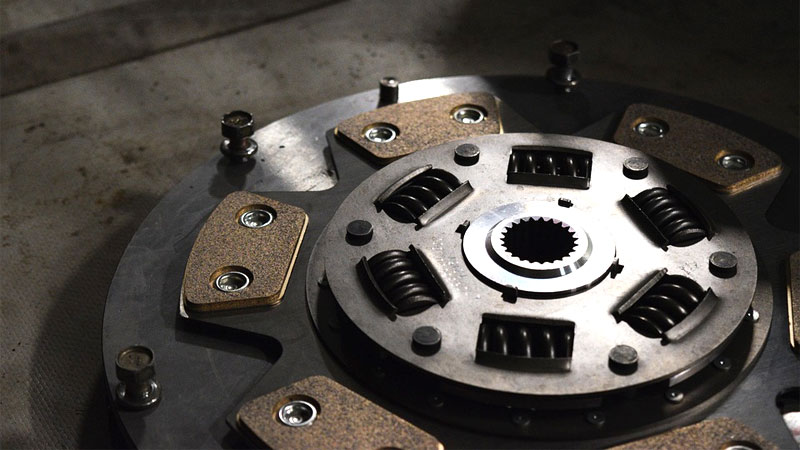
Aftermarket clutches are often designed to hold more torque than the clutch that the car was originally sold with.
If you've recently changed your clutch but replaced an OEM unit with an aftermarket one, this could be normal behavior. Check forums for your vehicle and reviews for the clutch you bought to see if this is a common experience.
If you're looking at a used vehicle with a heavy clutch, this may be one thing to ask the owner about before you decide to purchase the vehicle.
9) Obstructed Clutch Lines
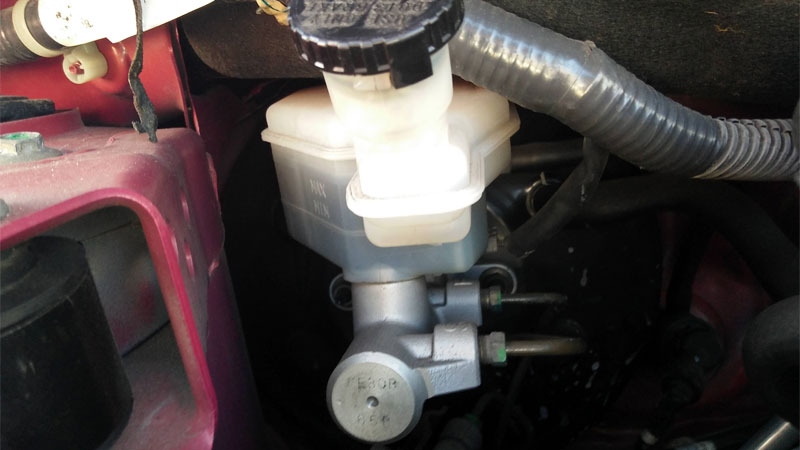
Most clutches are hydraulic, much like the braking system. If there were an obstruction in the clutch lines such as a collapsed hose or a blockage from debris, the clutch pedal may be much harder to press.
10) Missing Clutch Assist Spring
Newer vehicles with manual transmissions often come with a clutch assist spring to make it easier for the driver to depress the clutch pedal. These assist springs also remove play at the top of the clutch pedal travel.
However, clutch assist springs have a distinct breakover point in the middle which could make the clutch feel vague. Some drivers don't like this and will remove the spring for a more old-school clutch pedal feel, at the expense of a stiffer pedal.
11) Bad Clutch Release Bearing

When you depress the clutch pedal, the clutch release bearing or "throwout" bearing pushes on the fingers of the pressure plate to separate the pressure plate from the clutch. This allows the pressure plate and clutch to spin at different speeds.
The clutch release bearing will lose lubrication over time, which will wear out the bearing and make it more difficult for the bearing to spin. As this happens, it may become more difficult to depress the clutch pedal. If your clutch release bearing is going out, you may also notice a whirring or chirping sound that goes away when you release the clutch pedal.
12) Bent Push Rod
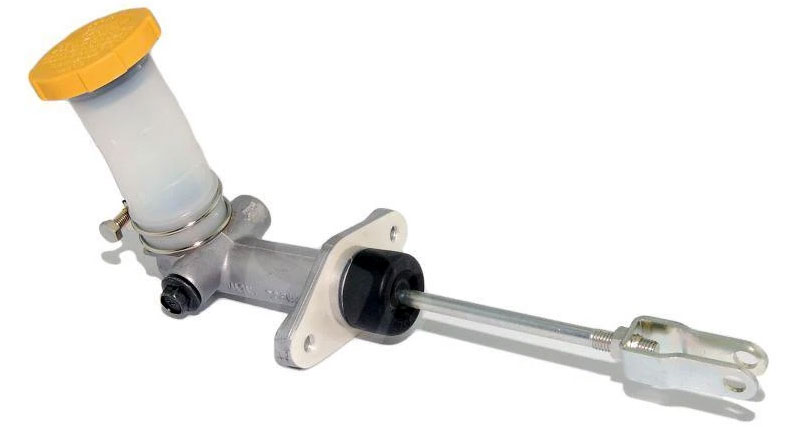
The push rod connects the top of the clutch pedal to the piston inside the master cylinder. If this rod were to bend, it may not travel smoothly through the clutch master cylinder.
While this is not a common issue, it's possible for the push rod to bend while replacing another component, such as the clutch pedal assembly or master cylinder.
13) Bad Clutch Booster
Some clutches use a vacuum assist, much like the brake booster for the brakes. If these vacuum lines were to leak, it would lead to a much firmer clutch pedal feel.
These are not terribly common, and you should be able to pop the hood and identify a clutch booster pretty easily if you have one. They're usually round and should look a bit like a smaller version of the brake booster.
Source: https://oards.com/stiff-clutch-pedal/
0 Response to "02 Focus Continues to Speed Up When Pedal is Released"
Post a Comment